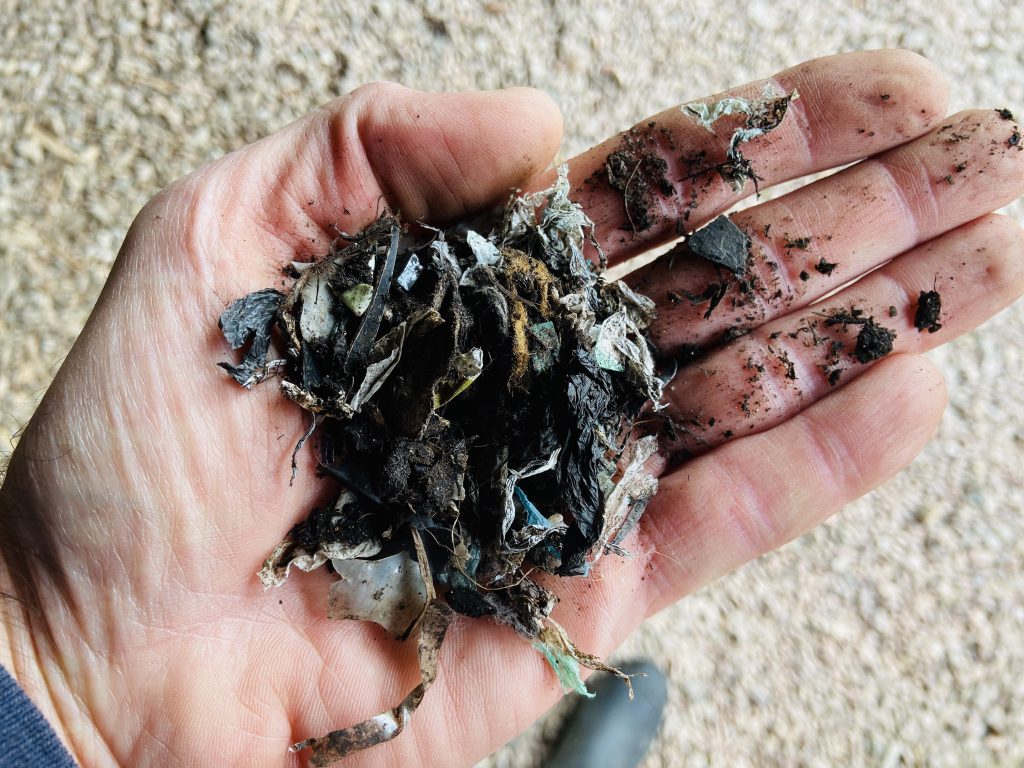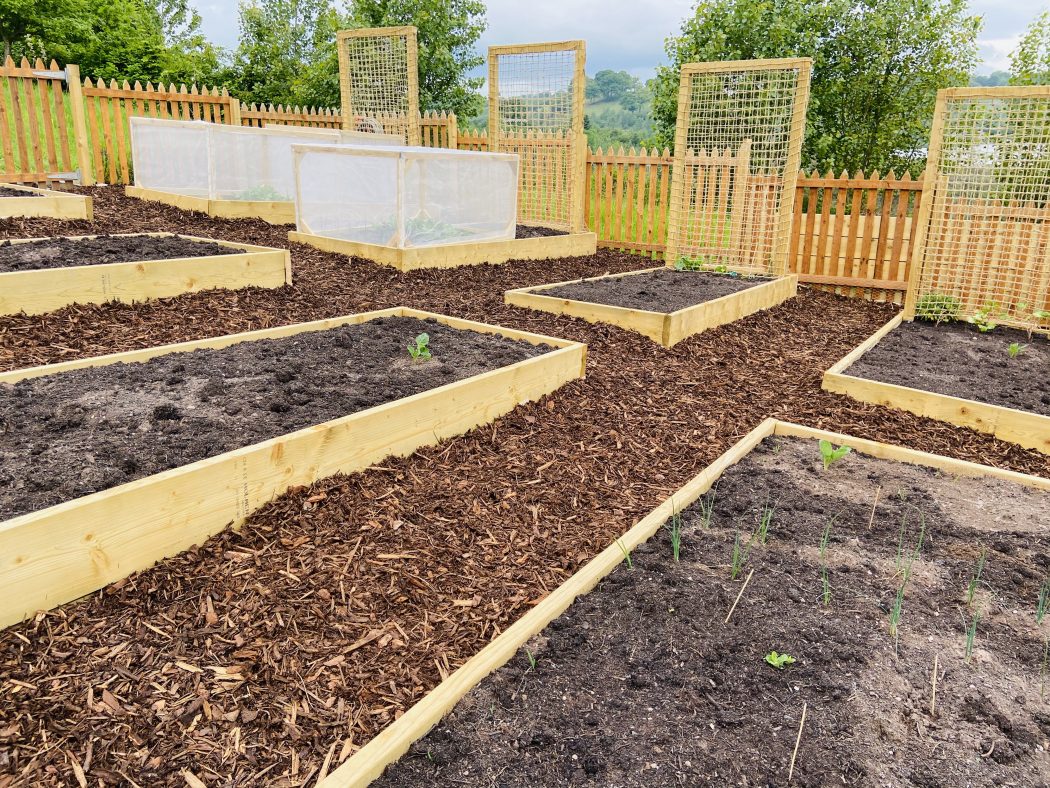Our new veg patch is ready to go, and I’m now paying special attention to the importance of soil. Most soil found in backyards across the world is a mixture of soil types, the residue of a multitude of toxins and miscellaneous particles (debris, glass, plastic, etc.).
Even though we’re in a rural setting, we’ve had to do a lot of work to get the soil right in our raised beds. Due to the limitations of getting specialist suppliers during the Coronavirus lockdown in the UK, we purchased some large dumpy/bulky bags of compost from our local country store and agricultural supplier.
When the compost arrived, it appeared to be good quality. It was only when we started wheelbarrowing and emptying it into in the raised beds that we discovered loads of hard and soft plastics, glass and other unrecognizable debris. It was another reminder of just how polluted our planet has become.

Cleaning up the soil and compost mix was a necessary first step in making our raised beds good for growing. We’re still picking out bits of plastic, but we’ve managed to remove the bulk of it and can’t wait to use our own compost next year that we’re making ourselves.
The importance of soil is paramount because plant growth is strongly influenced by soil structure as this affects the movement of water, air and roots through the soil.
I’ve done my reading, and soil structures include loamy sand, loam, clay loam and clay. Each of these soil types is distinguished by the density of soil particles, their capacity to absorb or deflect moisture, and their ability to hold together when wet. Soil is made of small particles of clay, larger particles of sand, and medium-sized particles of silt, plus organic matter and air.
We’re pleased with the structure of our soil which is a balanced mix of compost, soil and John Inness #2. Next year, we’ll just fortify it with our compost.
To get a general sense of our soil health I regularly take a close look at it during my morning rounds to make sure it looks good and that our veg and seeds are growing well. Oddly enough, and I don’t know if anyone else does this, but when examining the soil and plants, I’m not averse to smelling it.
Our soil smells earthy and it emits a pleasant smell when watered. This is my own “smell test” because unpleasant odors probably indicate poor drainage or water-logged soils. I always think about the smell of a water logged plant pot that’s been left out in the rain for too long and the soil at the bottom smells foul when you tip it out. Earthy, pleasant and inoffensive smells is what we’re aspiring for. So far, so good.
Now that our raised beds are ready, we think our soil is ready to work for us this summer. Within days of filling our raised beds, we saw the creation of an environment and eco system where small and large organisms are flourishing. This underlined the importance of soil for me.
And next year, it’ll hopefully be even better because of the compost bin we’ve built that’s fueled by garden offcuts, bio matter and kitchen scraps that we will return to our soil.
By all accounts, compost is one of the magical transformations of gardening. It helps us understand waste and it encapsulates the cycle of life as a companion to death and decay.
